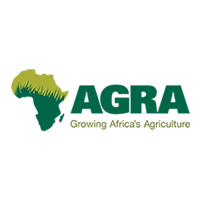Fall Armyworm Mitigation: Learning Modules for Trainers of Smallholder Farmers in Africa
Here you can access Learning Modules designed to assist Trainers/Teachers of smallholder farmers in the training and advising of smallholder farmers on the management of the Fall Armyworm (FAW) pest. These Modules are based on Good Agricultural Practices (GAP) and Integrated Pest Management (IPM) principles, with a focus on Fall Armyworm (FAW) mitigation.
To access and download the training materials the Modules, you must register on the AgriTraining website – you only need to register once. Where the files are large and need significant resources to download, an option to view on the website is provided.
The 7 Modules are as follows with a brief description of the content of each:
| Module Name | Description |
|---|---|
| Module 1: Responsible use of agrochemicals when combatting Fall Armyworm (FAW) | Module 1 covers the key elements of using personal protective equipment (PPE), how exposure may happen in a small holder context and how to prevent it, safe storage principles, and how to safely handle spills and disposal in a small holder context. |
| Module 2: Fall Armyworm (FAW) biology and identification | Accurate identification of FAW and an understanding of its biology are important to successfully manage FAW. This Module covers the identification and biology and signs of crop damage. This information forms the foundation of any FAW management program and will empower farmers to scout and improve decision-making for pest control. |
| Module 3: Monitoring and scouting for Fall Armyworm (FAW) | Smallholder farmers may only check their maize plantings once or twice during the crop cycle. Field training in scouting and action thresholds conveys key messages about how and when to assess risk of crop loss and when to take action. By scouting, farmers learn a great deal about effective and practical pest management. |
| Module 4: Economic and action thresholds for Fall Armyworm (FAW) control | The risk of yield loss due to pest damage is influenced by many factors including pest pressure, stage of plant growth, and climate. Decisions about control methods should be determined by the assessment of the risk of loss. Module 4 provides information on the risk of crop loss under certain conditions with guidelines to assist decision making. |
| Module 5: Non-chemical control of Fall Armyworm (FAW) | Farming practices play an important role in suppressing pest numbers. Biodiverse and healthy agro-ecosystems generally have lower pest pressures. This Module provides information on a range of non-chemical pest control options for FAW including intercropping, encouraging natural enemies, and the push-pull system. |
| Module 6: Applying pesticides correctly and effectively for Fall Armyworm (FAW) control | If pesticides are chosen as a control method, the correct application of a pesticide is an important skill for smallholder farmers. |
| Module 7: Pesticides for Fall Armyworm (FAW) control | A smallholder farmer could be faced with a number of insecticide choices when applying a product for FAW control. Module 7 helps Trainers educate farmers on understanding a pesticide label and insecticide resistance management. |
Click here for FAQS about these modules
Each Module consists of:
- A recorded FAW Presentation for Trainers: This is a presentation for Trainers to help them both understand the technical material, the main messages of each Module, and what to teach smallholders. These videos are available in high definition (HD) and standard definition (SD) that may be downloaded and viewed offline on a tablet or laptop.
- Presentation and accompanying Trainer’s Guide:
- Presentation for trainees: This is a presentation that Trainers may present directly to farmers as part of field trainings to farmers. The presentation may be used “as is” or modified to suit specific training needs. The presentation is provided both in PowerPoint (PPT) and PDF formats to allow Trainers to modify to suit their training needs.
- Trainer’s Guide: Each Module and Presentation has a Trainer’s Guide to assist Trainers with understanding the material and developing their own training materials. Each contains notes slide by slide to guide the trainer through undertaking lessons.
- Supplementary Materials: Each Module has select additional materials that highlight the main messaging or provide more in-depth information on the technical material. Some of these may be printed as handouts for participants as reminders of the topics discussed. Supplementary training materials include, for example, a spreadsheet for knapsack calibration, handouts, and video animations.
Advice for Trainers/Teachers training and teaching adult learners is here. [This is a link to a page with the advice on adult learners, how to arrange the training, posing questions to learners, etc.]
Acknowledgements:
This project was funded and supported by the Alliance for a Green Revolution in Africa (AGRA), and the United States Agency for International Development (USAID). It was implemented by Land O’Lakes Venture37 and Villa Crop, in collaboration with the University of Stellenbosch (SUN), Sound Idea Digital and Vane Digital in South Africa.







